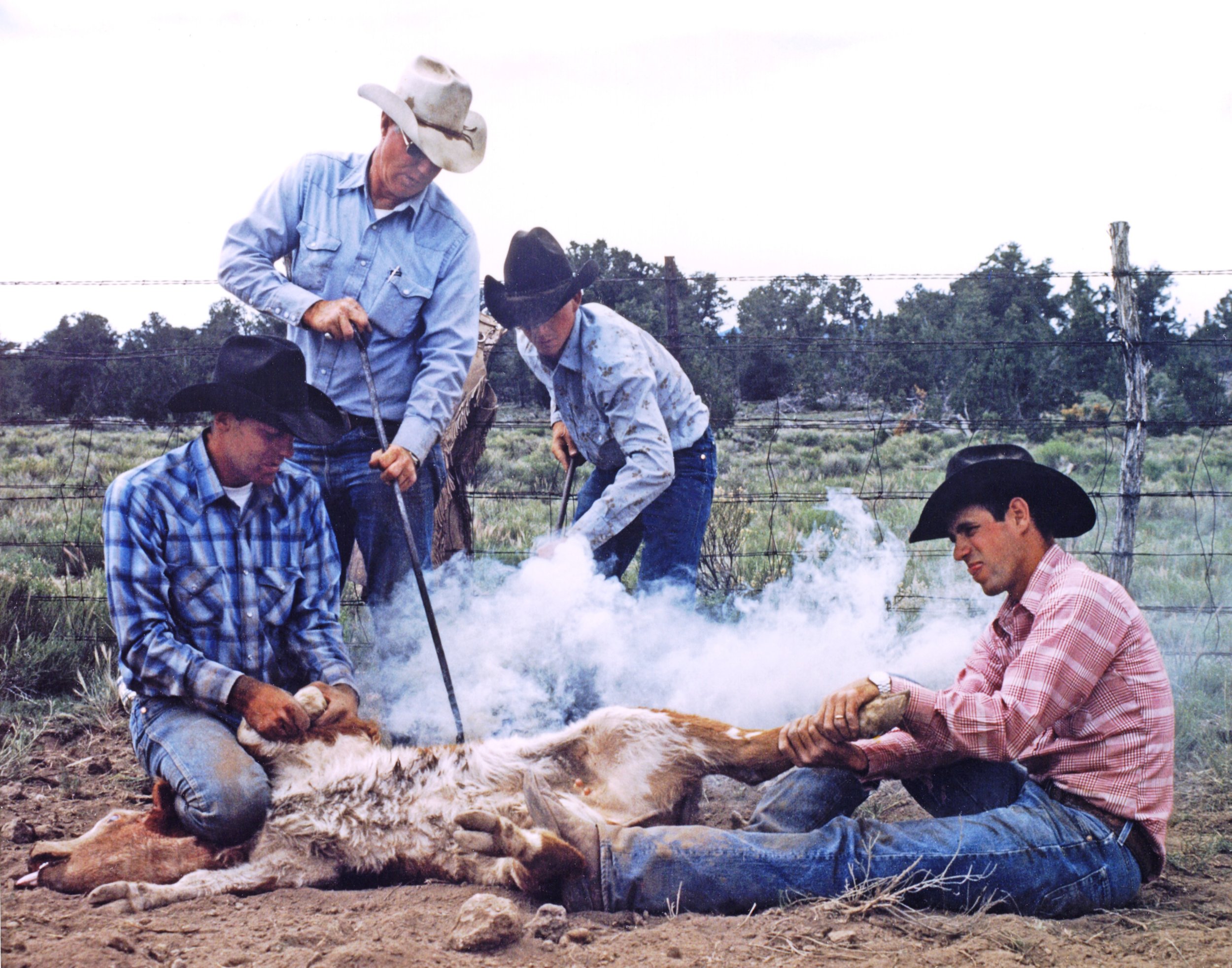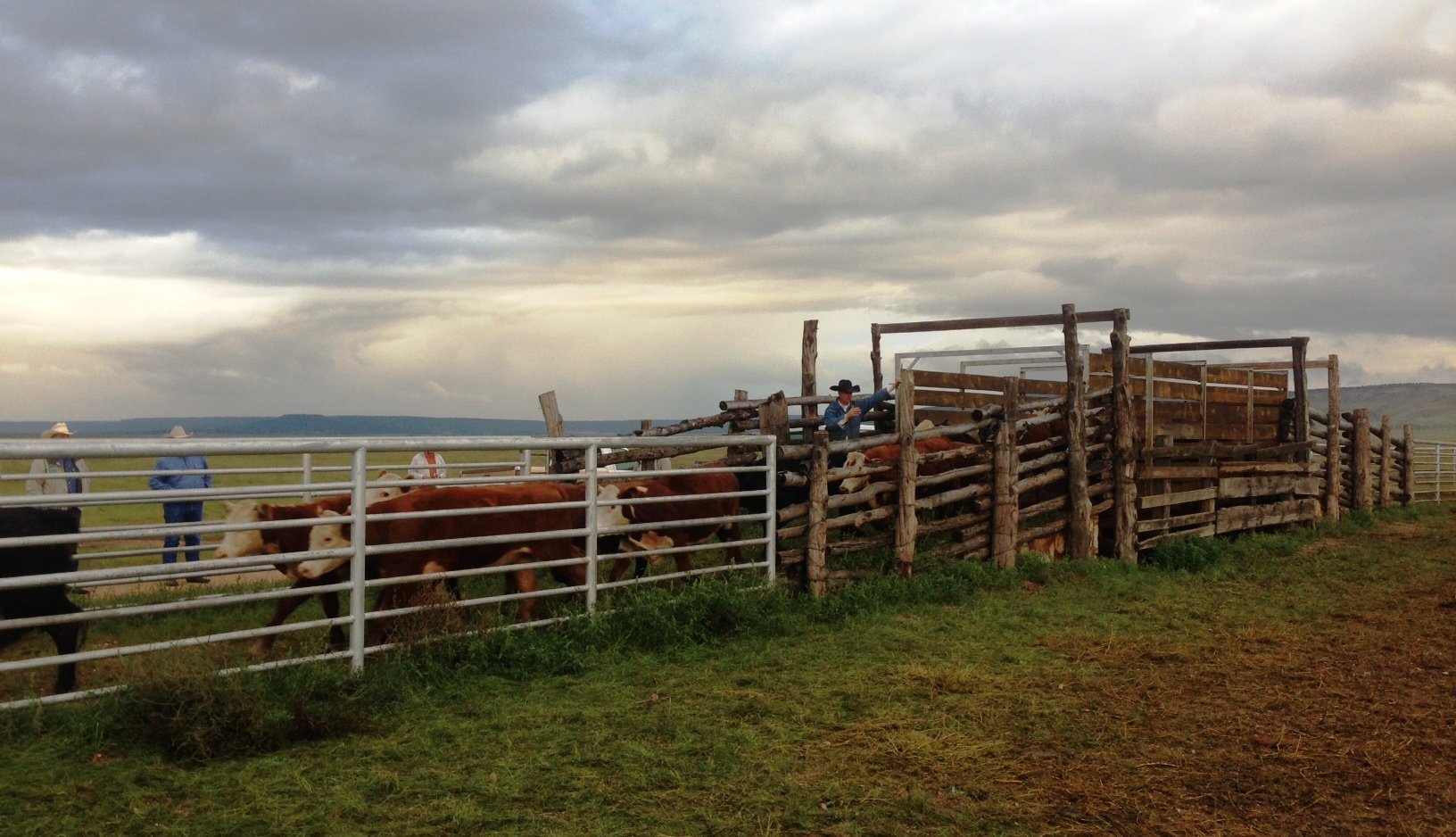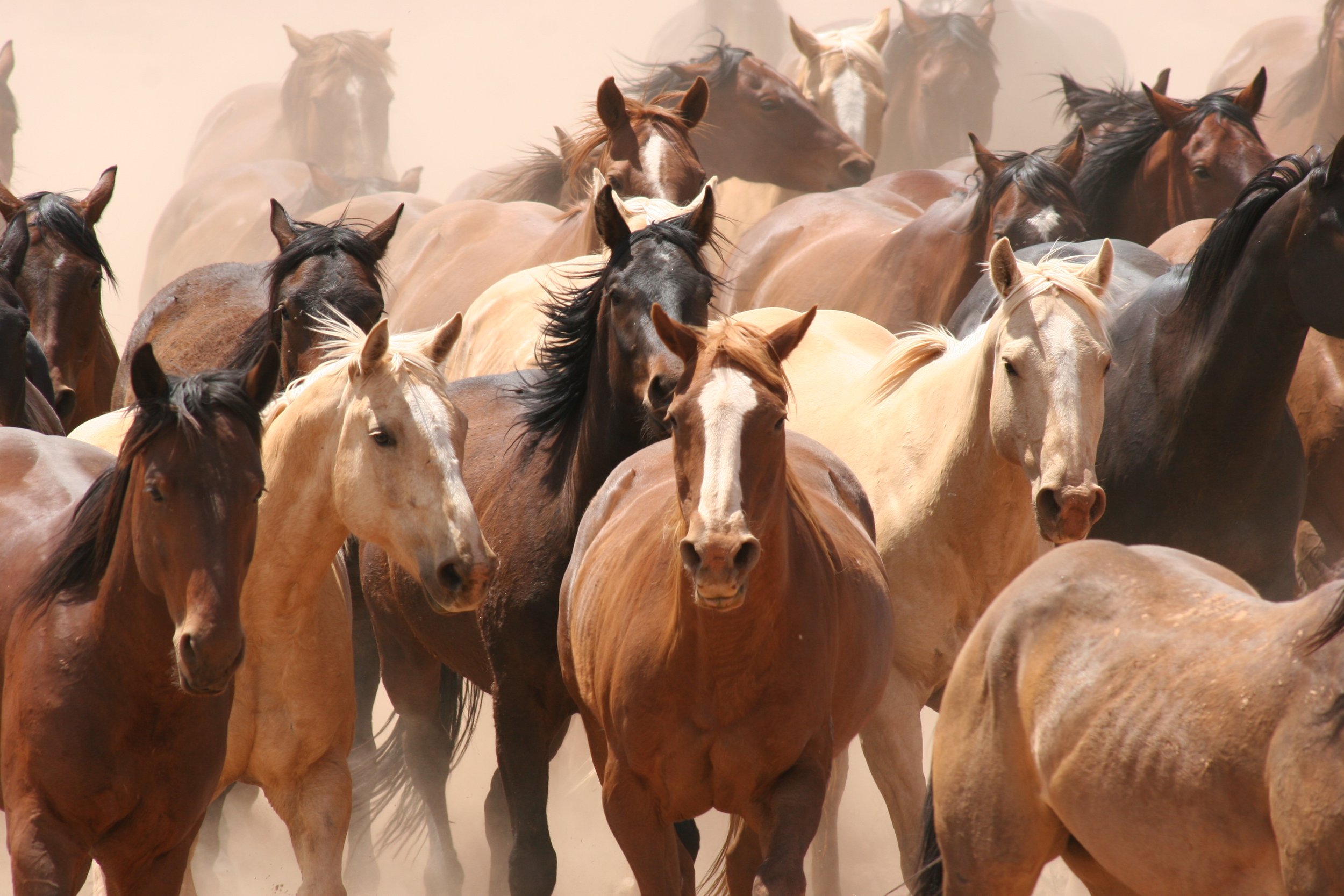Babbitt Ranches
Babbitt branding crew-Billy Cordasco (left) and Vic Howell (right)
Flagstaff- Coconino County
Inducted in 2022
In this 136th year in operation as one of Arizona’s largest private cattle ranches, Babbitt Ranches President and General Manager Billy Cordasco beams with gratitude, passion and excitement for the opportunity to participate with the land, the agriculture industry and the extended Babbitt Ranches Community. Some of the fondest memories and longest held values for this fourth generation Babbitt, including the development and articulation of what he calls “Cowboy Essence,” were being crafted as a child while driving around the ranch with his granddad, the late Ranch Manager John Babbitt.
As Cordasco explains, the Babbitt Ranches story began when David Babbitt, 28, and his brother, Billy, 23, stepped off the train in Flagstaff on April 7, 1886. They were on a scouting mission to the West to find cattle and land where they, along with their three other brothers – George, 26, Charlie “C.J.” 21, and Edward, 18, back in Cincinnati, Ohio, – could live their dream as cattle ranchers. Thus far, the trip had been discouraging. Land prices had risen since David’s first journey out West, two years earlier, and they had not found land that seemed suitable. But what they saw from the train depot in Flagstaff that chilly spring morning was devastating. “The whole little town had recently burned to the ground. David surveyed the landscape and turned and said to his brother, ‘Don’t even unpack your bags, Billy. We’re certainly not staying here long,’” said Cordasco.
That’s when they noticed a sign with the name Brannen on it. The young men had letters of introduction with them, written on their behalf to the town doctor. If Doc Brannen had not been in his tent office behind the temporary headquarters of the Brannen Mercantile Company on that morning, there probably would have been no Babbitt saga to tell.
“David and Billy had nearly $20,000 to spend and they were ready to go all in,” said Cordasco. “Turns out there had just been a large herd of cattle brought in from Kansas just east of Flagstaff, a place known as Canyon Diablo.”
For $17,640, they bought 860 head of cattle, which they mortgaged to purchase land near Lake Mary. They settled amidst ponderosa pines and clear mountain springs and branded the cattle with the CO Bar brand – a sentimental reminder of their hometown, Cincinnati, Ohio.
Equipped with business experience from running the family grocery store and financial backing from Gerhard Verkamp, the wealthy father of three daughters who married three of the brothers, the enterprising young men began a business model of forming partnerships with other cattle ranches in the area, starting with the A-1 Cattle Company north of the San Francisco Peaks and the Hashknife outfit to the southeast.
“They would partner with these other ranches all the way to New Mexico and they would let them run the operation, and that’s how they worked it over and over. Whatever happened, the Babbitts ended up with these ranches and that’s how they built an empire,” said Cordasco, adding that the Babbitts could always be counted on to buy out the partner.
An impulse by C.J. in spring 1900 launched the Babbitts into the sheep business for 40 years. While traveling on horseback north of Flagstaff, he noticed a scraggly looking sheep and learned it belonged to Joe Moritz, who was ill. C.J. made an offer and for $12,000 bought 5,000 head of sheep. In typical Babbitt fashion, they sold a quarter interest of the new operation back to Moritz, who would continue to manage the herd. With this transaction, the Babbitts, along with Herb Babbitt, were likely the first cattle ranchers in the area to be in the sheep business, too. At the peak, they owned 100,000 head of sheep.
Through this process of acquiring ranches, the Babbitts ended up with millions of acres across the West. “The number of cattle was staggering,” said Cordasco. Meanwhile, the Babbitts were growing the town of Flagstaff, enhancing the education and arts communities, and being involved in politics and a great number of businesses.
C.J. and Billy were said to be movers and innovators and the Arizona Cattle Industry is said to owe much to their leadership. “Billy was one of the first to try range tanks for holding the precious Arizona rainfall. Today we call those dirt tanks,” said Cordasco. “Using horses and large scoops, Babbitt crews gouged out many hundreds of these artificial water holes.”
Managing water was a theme that played out through the years. John Babbitt, C.J.’s son, became ranch manager in 1935 and was passionate about finding water. “A good ranch always manages for drought,” he’d say.
“Granddad drilled a lot of wells that were very dry,” said Cordasco. So, along with the Soil Conservation Service, John Babbitt and others looked for locations for dirt tanks to be built where they could distribute water through a pipeline. Today, there are more than 100 miles of pipeline on the ranches.
“Getting that water development in place and the water rights was really important to John Babbitt,” said Cordasco. “That’s how they were able to set up camps and create a framework for families to live on the ranches. We now have third and fourth generation ranch families living across Babbitt Ranches.”
The Babbitts recognized an opportunity to move the horse breeding program in a direction that would be more substantive for the purpose of raising solid working horses. They found a stud out of southern Arizona at about the same time the American Quarter Horse Association was allowing mares to be registered. The ranch began securing studs from the Driftwood lineage, known for cow sense and rodeo ability.
As the years went on, word of the quality horses spread and spectators began to show up during Spring Works to see the new colts and enjoy the Western experience. Sometimes visitors would want to buy a filly. If more than one wanted the same horse, the cowboys would put their names in a hat and draw the winner.
Eventually this tradition became such an important event for the extended Babbitt community, that it evolved into the Annual Hashknife Colt Sale, an auction and outdoor gathering held on the second Saturday in July at Spider Web Camp. “It’s never been about selling horses, it’s about community and enjoying a great day together,” said Cordasco.
By 1991, Babbitt Ranches was going through successional changes. Cordasco, 28, was selected to take over company operations for the retiring John Babbitt and Victor Howell was chosen to become the ranch manager. Many forces were at play and the company was under pressure to sell.
“We had offers from neighboring entities and there ended up being this big push for 40-acre development,” recalls Cordasco. “What was absolutely remarkable, the owners took it to a vote and it was absolutely unanimous not to go that direction. It was a benchmark moment.”
That decision got owners talking about a land use ethic, which started the science, research and educational nonprofit arm of Babbitt Ranches, the Landsward Foundation. “What a land use ethic meant got well-seeded in a family that already had it in them since 1886,” added Cordasco. It resulted in the development of The Constitution of Babbitt Ranches and a forged ethic defining principles, values, purpose and Cowboy Essence, a description of character qualities.
That defining moment opened doors for Babbitt Ranches to participate in a number of projects with a wide variety of people and organizations. It also led to one of the largest conservation easements in the country, in which a portion of the Cataract Ranch was donated to Coconino County and The Nature Conservancy to be set aside as open space in perpetuity. Other Babbitt Ranches conservation easements followed for research, wildlife and wildland protection.
The values and principles that shaped the family business since 1886 continue to guide Babbitt Ranches as the company pioneers the path forward with a fresh focus on agriculture, renewable energy, landscape-scale conservation, dark sky protection, scientific discovery, golden eagle conservation, an Outdoor Recreation Ethic Attitude, and succession and sustainability.
“With the Babbitt family, owners, ranch families and the hundreds and hundreds of people associated with Babbitts throughout the years, our success has always been and always will be in the strength of our relationships,” said Cordasco. “The decisions we make today are on behalf of our children, our grandchildren and their children. And that is our motivation as we create a forged ethic in meaningful new business, environmental and community opportunities.
Affiliations
Arizona State Parks, Chairman
Hopi Tribe Wildlife and Ecosystems Management Board, Chairperson
Arizona Department of Ag, Open Space Protection Commission, Member
Babbitt Brother Trading Company, President
Spur Land & Cattle Company, Board Member, Vice-President
Arizona Cattle Growers Association, Board Member
Arizona Farm Bureau Federation, Board Member
Arizona Farm & Ranch Group
Awards
ACGA 2021 Cattleman of the Year
American Hereford Association Cattleman of the Year
Arizona Game and Fish - Wildlife Habitat Steward of the Year
Arizona Outdoor Hall of Fame – Wildlife for Tomorrow
Morris K. Udall Award, Arizona Land Stewardship & Conservation – Nature Conservancy




